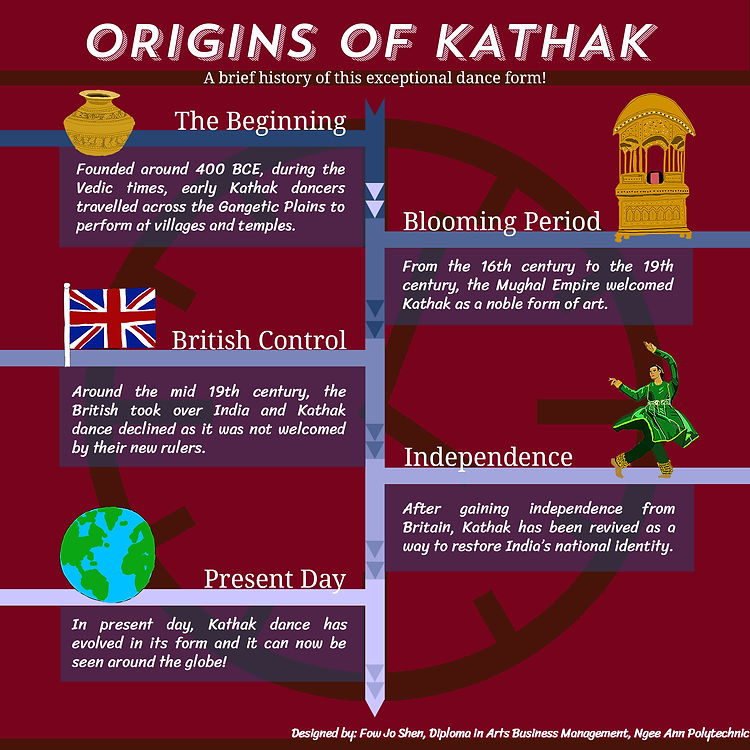
How did Kathak COme about?
Kathak is one of the eight major traditional dance forms that can be found in India (Williams, 2004, p. 83) It uses intricate movements of the dancer’s hands and feet, along with their flexibility and facial expressions, to perform and tell a story. Kathak dance is the most prominent form of dance in northern parts of India (Lochtefeld, 2002, p. 358). It has historical links and many influences from both Hindu and Islamic culture, despite the fact that Islamic culture did not have a positive attitude towards dance, as it is deemed forbidden, especially between men and women (BBC, n.d.). The word “Kathak” is derived from the Sanskrit word “Katha” which means “story” or “storytelling” (Shah, 2005, p. 8). Take a look at the timeline below to go through the history of Kathak from when it was first founded, all the way to the present day!

Take a look at the timeline below to go through the history of Kathak from when it was first founded, all the way to the present day!
Click below to view the section on historical purpose of context!
Answer these questions to test your knowledge of 'Origins' and 'Historical Purpose'!
References
Kathak: Does every gesture have a meaning? (n.d.). British Broadcasting Corporation.
Kothari, S. (1989). Kathak, Indian classical dance art. Abhinav Publications.
Lochtefeld, J. G. (2002). The illustrated encyclopedia or Hinduism. Juvenile Nonfiction.
Massey, R. (1999). India’s kathak dance, past, present, future. Abhinav Publications.
Shah, R. (2005). Movement in stills: The dance and life of Kumudini Lakhia. Mapin Publishing.
Snodgrass, M. E. (2016). The encyclopedia of world folk dance. Rowman & Littlefield.
Walker, M. E. (2014). India’s kathak dance in historical perspective. Ashgate Publishing.
Williams, D. (2004). In the shadow of Hollywood orientalism: Authentic east Indian dancing.
Content by: Jo Shen
Design by: Jo Shen
